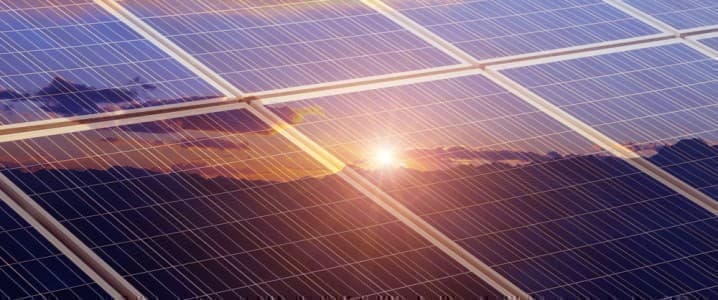Meeting national climate goals in the United States will require a rapid expansion of solar energy production. Under the pressure of the United Nation’s issuance of a “code red” for humanity and with the added stimulus of the Inflation Reduction Act, solar power projects are getting bigger and more ambitious in scale all the time. But there’s a major problem facing all this growth – projects that big require a lot of land, and not everyone is happy about it. What’s more, it doesn’t come cheaply.
Late last year, global management consulting firm McKinsey & Company released an analytic report that included land as one of three key challenges facing the renewable revolution, in addition to issues with arduous and lengthy bureaucratic processes and unprepared power grids. Solar farms need huge tracts of land to operate at scale, and there is often fierce competition for those parcels, driving up prices for solar developers. “Utility-scale solar and wind farms require at least ten times as much space per unit of power as coal- or natural gas–fired power plants, including the land used to produce and transport the fossil fuels,” McKinsey reports, adding that “large solar farms span thousands of acres.”
What’s more, the massive scale of these solar farms can upset their neighbors. Already, there is major pushback from rural America, where the vast majority of these projects are planned. Pushing a green energy agenda in deeply red states is hard enough, but it’s particularly tricky when you’re competing with local agriculture for land rights, and building what some see as massive eyesores in rural residents’ backyards. Solar expansion in the United States has already been majorly stalled by protests from disgruntled groups in America’s heartland. “Over the past year, solar projects in Ohio, Kentucky and Nevada have all been delayed or sunk by irked local people,” the Guardian recently reported. There has also been backlash from local and state governments, with measures to restrict renewable energy facilities successfully passed in 31 states.
With all this in mind, it seems daunting – if not impossible – to sketch out a feasible pathway toward installing the whopping 60 GW of solar capacity each year from 2025-2030 that will be necessary to decarbonize the national power grid. But a new report from Environment California and the Frontier Group gives some hope for continued solar expansion in the United States without running into major land-use arguments and roadblocks. The solution is simple: land use must be shared.
In this case, the proposed solution is to put solar panels on the rooftops of warehouses and distribution centers across the nation. All told, there are more than 450,000 of these buildings already existing in the United States, together representing a staggering 16.4 billion square feet of roof space. Covering this space will photovoltaic solar panels would be able to generate 186 TWh of electricity, or enough electricity to power nearly 20 million homes. “Generating this estimated 186 TWh of electricity would be equivalent to more than 112 million metric tons of carbon emissions avoided,” PV Magazine reports. “This is equivalent to the emissions contribution of over 24 million gas-powered cars over the course of the year. It would also preserve an estimated 376,000 acres, nearly double the size of New York City, from being sacrificed for electricity generation.”
In addition to putting more solar panels in industrial parks, there are plenty of other shared land-use solutions already being used in rural contexts around the world that could be applied in the United States as well. In Germany, farmers are growing hay in the furrows between rows of standing solar panels. In France, grapevines are growing in the shade of solar panels on vineyards, while in Japan it’s tea leaves that benefit from the panel-produced shade. In Canada as well as in Australia, sheep share their pastures with solar panels, providing welcome shade to the animals. In fact, there is a whole field of research around building synergies between agricultural needs and energy needs, called agrivoltaics. Does this solve the climate crisis? No. Does it solve the land issue? Not entirely. But it’s a hell of a good start.
By Haley Zaremba for Oilprice.com
More Top Reads From Oilprice.com:
- Why OPEC Is Increasingly Frustrated With The IEA
- A Secret War Is Brewing In The South China Sea
- Huge Volumes Of Crude Oil Are Headed To China


















Addable new turbine cycle with CO2 or Hg instead H2O and instead a wasting cooled condensor a sucking centrifugal compressor blower backflow cooling (indirect) that way all of the system thermal isolatable efficiency near 100%